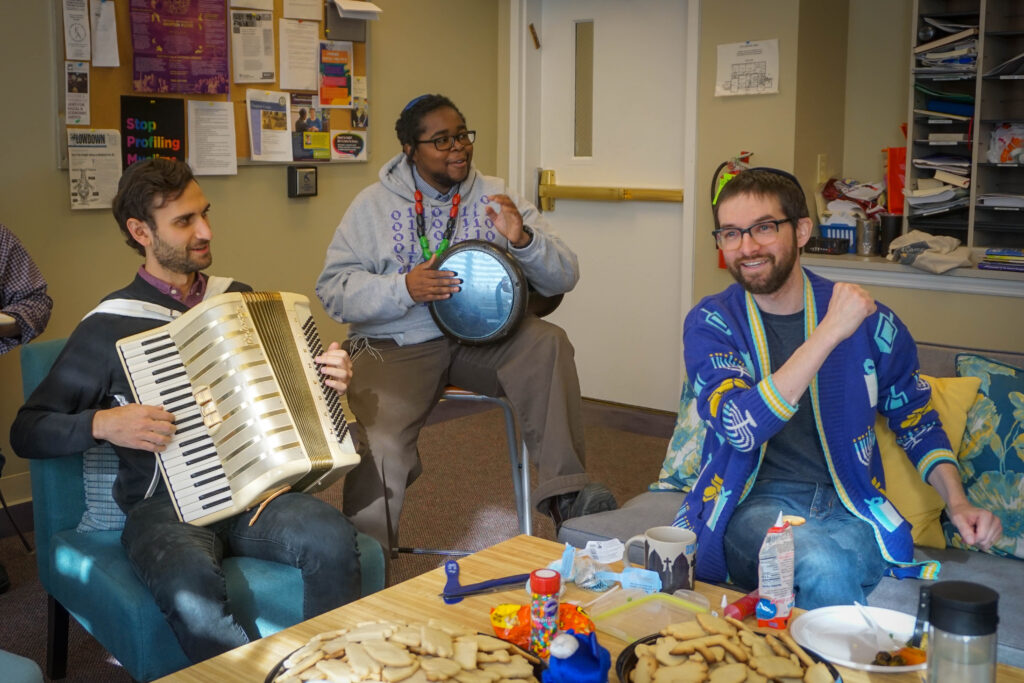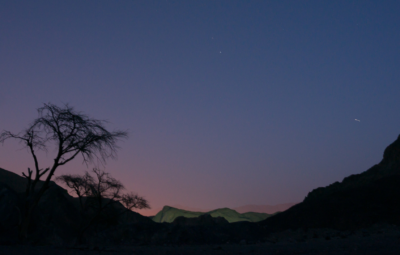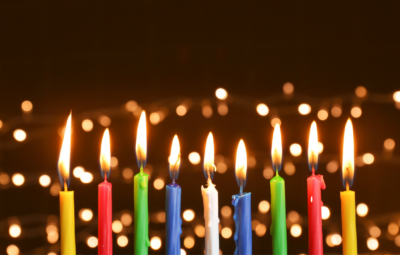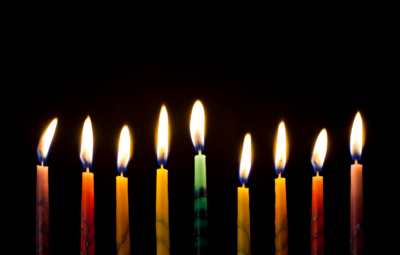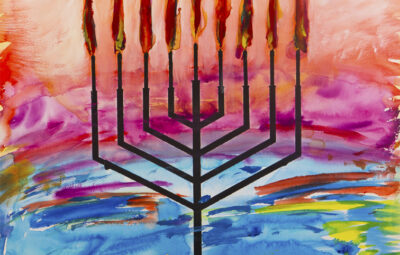
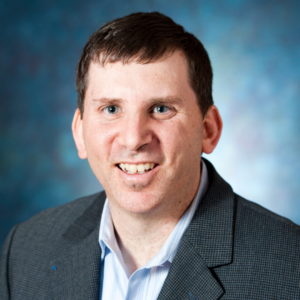
Bryan Schwartzman
Assistant Director of Media & Development Communications
Who doesn’t love Hanukkah? Lighting candles, eating scrumptious jelly doughnuts, opening presents, inflating dreidels taking up entire lawns …
Yet Hanukkah isn’t just play; it is a conversation between the past, present and future. Tradition also holds that Jewish individuals and families tell and retell the story behind the candles. Each of us is invited to seriously explore issues of militarism and assimilation, universalism and particularism.
Ever since the Maccabees rededicated the Temple in Jerusalem in 164 BCE, Jews have wrestled with some of the holiday’s more troubling aspects, particularly its militarism and chauvinism. It’s a good thing to ask difficult questions of our traditions. The fact that a festival’s meaning changes over millennia doesn’t take away from that holiday’s legitimacy. Rather, reinterpretation shows Hanukkah’s elasticity and enduring power. Delving into history and meaning is a cornerstone of the Reconstructionist approach to Judaism.
In fact, one could argue that the entire history of the holiday and its observance demonstrates the Reconstructionist understanding that Judaism is the “evolving religious civilization of the Jewish people.”
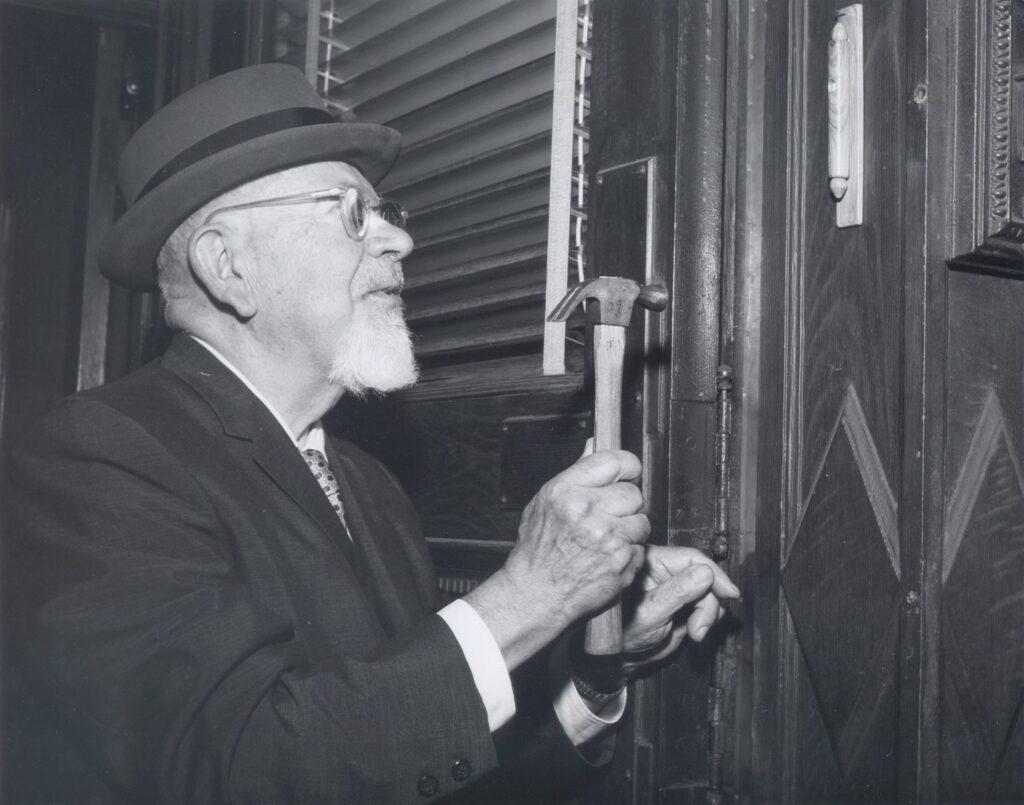
Rabbi Mordecai Kaplan (1881-1983), the intellectual founder of the Reconstructionist movement, took a sociological approach to Judaism: Tradition and observance exist and evolve to meet the changing needs of the Jewish people. Of course, that’s the inverse of traditional Judaism, which teaches that Jews exist to serve God and are commanded to fulfill mitzvot.
Reconstructionist thought also places a high value on upholding inherited traditions. If a tradition or observance no longer speaks to us, the Reconstructionist impulse isn’t to discard it; instead, we are urged to try and wrest new meaning from it — unless reconstruction proves impossible. (For example, Reconstructionist communities no longer find meaning in the idea that the Jews are God’s chosen people and have changed the liturgy to reflect a more egalitarian understanding of the world.)
For a thorough explanation of Hanukkah and how Reconstructionist Jews understand it, I highly recommend the Hanukkah chapter in A Guide to Jewish Practice: Volume 2 – Shabbat and Holidays. Though there is much that we don’t know about what historically transpired, it is clear that the war wasn’t entirely a Jews versus Syrian-Greeks affair, with some Jews embracing Hellenism and all that it represented: art, culture, the outside world.
In throwing off their Syrian-Greek conquerors, the Maccabees established the Hasmonean dynasty and declared a national holiday celebrating their military victory. Centuries later, the rabbinic sages expressed deep discomfort with the festival’s militarism and nationalist overtones. The two revolts against Rome in the first and second centuries proved to be both a human and national catastrophe for the Jewish people. The rabbis also weren’t too fond of the Hasmoneans, whose century of rule was rife with corruption

(which may be why the books of Maccabees were left out of the Hebrew Bible). Yet the sages were bequeathed Hanukkah, and, like today’s Reconstructionisms, couldn’t, or wouldn’t, just drop it.
Instead, our sages engaged in the Reconstructionist process, two millennia before Kaplan. They radically reimagined the holiday’s meaning. In a famous Talmudic section from Tractate Shabbat, the rabbis asked “what is Hanukkah?” Their answer flipped the script: The festival wasn’t about human might but about the miracle of the oil lighting the menorah for eight days. “Thus, the rabbis transformed a national holiday marking a military victory into a Jewish holiday celebrated the triumph of faith,” wrote Rabbi Jason Gary Klein (RRC ’02) in A Guide to Jewish Practice.
Ever since the Maccabees rededicated the Temple in Jerusalem in 164 BCE, Jews have wrestled with some of the holiday’s more troubling aspects, particularly its militarism and chauvinism.
Bryan Schwartzman Tweet
Now, of course, the holiday and its traditions evolved over the centuries, but fair warning, I’m jumping way, way ahead in the story. Between 1880 and 1924, more than 2 million Eastern European Jews immigrated to the United States. By this time, Christmas had become a cultural and commercial juggernaut. Jewish leaders were desperate for the masses of immigrants to become part of American society while holding onto their own identity. When it came to Christmas, Jews were either left out or crossed a major taboo by, say, having a Christmas tree in the home. (In 2022, it’s much more widely accepted to incorporate aspects of multiple traditions in homes.) Jewish newspapers actively encouraged Jews to shift from Purim as the major gift-giving holiday to Hanukkah. The festival of lights was lifted from relatively obscurity to, fairly or not, be placed alongside Christmas because that’s what Jews thought they needed.
The interpretation of the holiday’s meaning shifted as well: It came to symbolize the victory of the passionate few against the mighty empire, not unlike our own Revolutionary war. (I loved reading “Hanukkah at Valley Forge” to my daughters.) Much like Passover, Hanukkah also has been taught as an example of religious freedom and basic human liberties. “Rabbi Mordecai Kaplan,” wrote Klein, used Hanukkah as an example of “the importance of religious ideals in a civilization’s survival and success.”
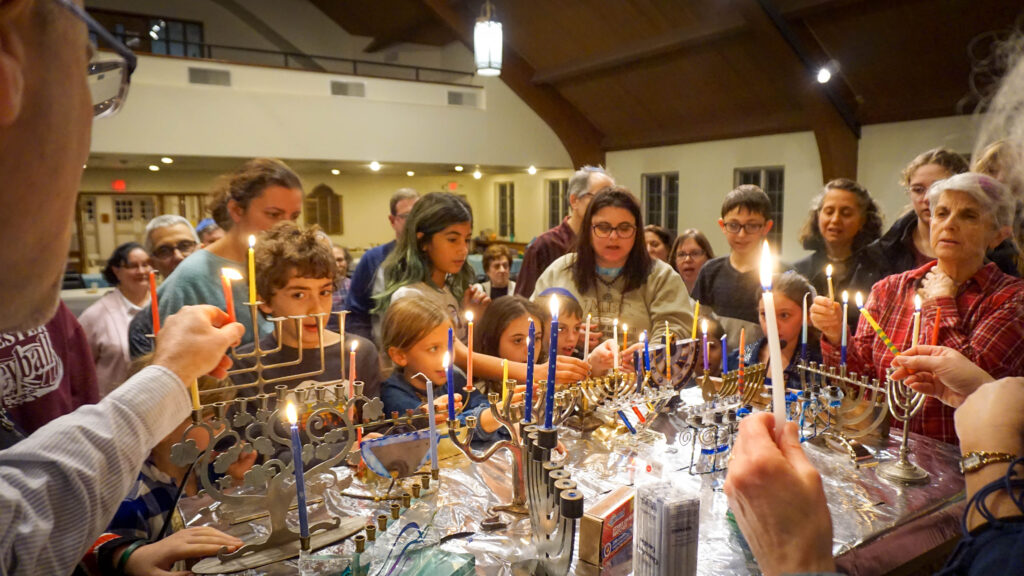
Kaplan was clearly troubled by Hanukkah’s violent associations. In 1945, as World War II still raged and the horrors of the Holocaust were coming to light, he wrote a Reconstructionist version of “Maoz Tzur,” the medieval Hanukkah tune. Rather than “preparing the slaughter of the blaspheming foe,” the lyrics now ask for the end of all bloodshed.
On American soil, the holiday has evolved in ways the ancient sages couldn’t have imagined — from public lightings to efforts to link Hanukkah to mental-health awareness and other social issues. (In Israel, the festival has evolved in a very different context with the Maccabees serving as inspiration to a populace focused on national defense.) The American Jewish community has changed profoundly during the past century. We’re more diverse in every possible way. Non-Jews are no longer the other but part of our families. The growing number of American Jews who identify as persons of color has already changed the sense of Judaism as an ethnicity. Who will we be? What will be important to us? How will Hanukkah serve our needs?
This is a conversation in which all of us can take part. As we look to the future, don’t stop debating, questioning, diving into history or reinterpreting the present and future. At the same time, whatever you do, don’t stop the kindling of the hanukkiah. There’s too much darkness. All of us can use a little illumination.
